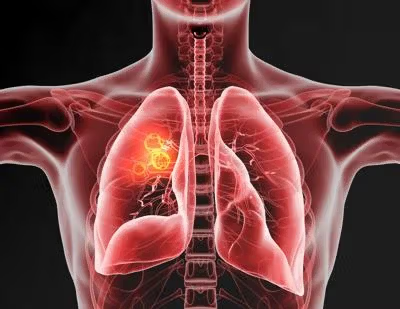News
Article
Tagrisso Plus Chemo Gets Priority Review for Metastatic EGFR-Mutant NSCLC
Author(s):
The FDA will speed up its review of Tagrisso plus chemotherapy for patients with advanced or metastatic EGFR-mutant non-small cell lung cancer after the regimen led to improved outcomes in a phase 3 trial.

The Food and Drug Administration (FDA) granted a priority review for a supplemental new drug application to Tagrisso (osimertinib) plus chemotherapy for the treatment of patients with advanced or metastatic EGFR-mutant non-small cell lung cancer (NSCLC), according to AstraZeneca, the manufacturer of Tagrisso.
The FDA grants priority reviews to drugs that could potentially offer better outcomes for people with serious diseases. In doing so, the agency speeds up their review process and potential approval. For this particular indication of Tagrisso, The FDA will decide on whether to approve the regimen within the first quarter (January through March) of 2024.
The priority review is based off findings from the phase 3 FLAURA trial that were presented at the International Association for the Study of Lung Cancer 2023 World Conference on Lung Cancer this September. The international trial included 557 patients with stage 3B-3C or stage 4 EGFR-mutant NSCLC who were randomly assigned to receive daily Tagrisso (administered orally) or Tagrisso plus chemotherapy (pemetrexed plus cisplatin or carboplatin) followed by Tagrisso with pemetrexed maintenance therapy.
Findings showed that Tagrisso plus chemotherapy reduced the risk of disease progression or death by 38% compared with Tagrisso alone.
READ MORE:Tagrisso Plus Platinum Therapy and Pemetrexed Improve Outcomes in Lung Cancer Subset
The combination regimen also improved average progression-free survival (PFS; time from treatment until disease worsening or death) by 8.8 months, according to investigator assessment and 9.5 months per blinded independent central review. The average PFS in the group of patients who received Tagrisso plus chemotherapy was 25.5 months, while the group of patients who received Tagrisso as a single-agent had an average PFS of 16.7 months.
“The FLAURA2 results reinforce Tagrisso as a backbone of standard of care in first-line EGFR-mutated non-small cell lung cancer, providing patients with an additional nine months of median progression-free survival when combined with chemotherapy,” Susan Galbraith, executive vice president, Oncology R&D at AstraZeneca, said in a company-issued press release. “This option is particularly important for patients with a poorer prognosis such as those with brain metastases. We look forward to working with the FDA on an accelerated timeline to bring this treatment regimen to patients as quickly as possible.”
A PFS benefit was observed across all subtypes enrolled in the study, including those with central nervous system metastases — a group of patients that, according to research published by the National Institutes of Health, tend to have poor prognoses. For this group, adding chemotherapy to Tagrisso extended the average PFS by 11.1 months and patients experienced a 53% reduced risk of disease progression or death.
In patients with central nervous system metastases, the average PFS was 24.9 months in the Tagrisso-chemothearpy group, compared with 13.8 months in the Tagrisso monotherapy group. For patients whose disease did not spread to the central nervous system, average PFS rates were 27.6 months and 21 months in the combination and Tagrisso-only groups, respectively.
While the overall survival (time from treatment until death of any cause) statistics were not mature at the time that the researchers last collected data, according to the press release, a favorable trend was seen with the Tagrisso-chemotherapy combination. Overall survival will continue to be observed in patients enrolled in FLAURA2.
Additionally, the safety profile of Tagrisso plus chemotherapy was “generally manageable,” according to the release, and consistent with the established side effects that were previously observed with both treatments. Notably, side effect rates were higher in the group of patients who received Tagrisso and chemotherapy and additional safety data will presented at an upcoming medical meeting.
For more news on cancer updates, research and education, don’t forget to subscribe to CURE®’s newsletters here.













